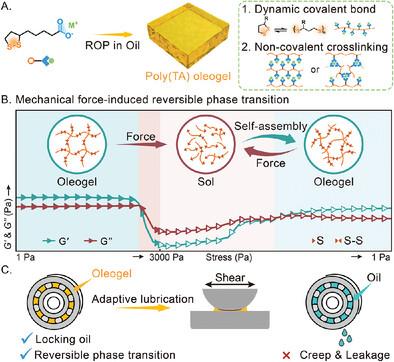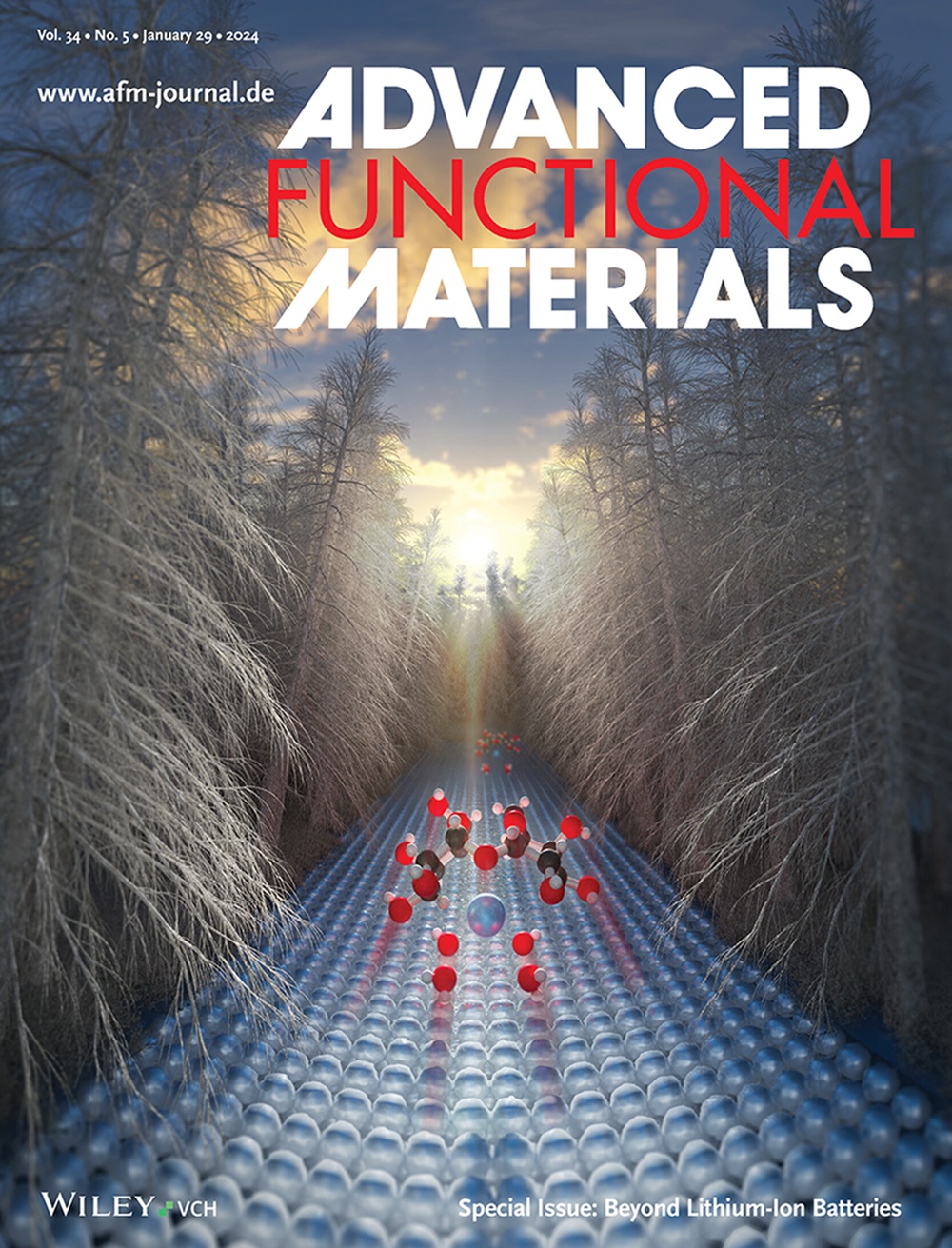Dynamic Covalent Oleogel with Mechanical Force-Induced Reversible Phase Transition for Self-Adaptive Lubrication
IF 18.5
1区 材料科学
Q1 CHEMISTRY, MULTIDISCIPLINARY
引用次数: 0
Abstract
Substantial progress has been made in stimulus-responsive and performance-tunable hydrogels, yet endowing organogels with dynamic adaptive properties remains challenging. Especially, the development of adaptive functional oleogel materials is further constrained by weak interactions between the oil and the gel network, along with the high viscosity of oil. Herein, the state self-adaptability of oleogels is enabled by constructing mechanical responsive dynamic covalent networks via ring-opening polymerization of thioctic acid (TA). Mechanically responsive breaking and rebuilding of disulfide bonds endow mechanical force-induced reversible phase transition of poly(TA) oleogels. Mechanical force-induced disulfide bond breakage disrupts the gel network, transforming the gel into a sol state. Once the mechanical force is removed, the rapid bonding of sulfur radicals rebuilds the gel network. Furthermore, this highly generalizable strategy has the potential as a self-adaptive lubricant. Self-adaptive oleogels can exist in a gel or sol state that adapts to whether the machine is running or stopped. Systematic tribological tests confirm the excellent lubricating properties of poly(TA) oleogels and their outstanding performance stability in adapting to changing friction conditions. This adaptive poly(TA) oleogels provides insights for developing oleogel functional materials with dynamic properties, as well as a new strategy for the development of smart lubricating materials.

求助全文
约1分钟内获得全文
求助全文
来源期刊

Advanced Functional Materials
工程技术-材料科学:综合
CiteScore
29.50
自引率
4.20%
发文量
2086
审稿时长
2.1 months
期刊介绍:
Firmly established as a top-tier materials science journal, Advanced Functional Materials reports breakthrough research in all aspects of materials science, including nanotechnology, chemistry, physics, and biology every week.
Advanced Functional Materials is known for its rapid and fair peer review, quality content, and high impact, making it the first choice of the international materials science community.
 求助内容:
求助内容: 应助结果提醒方式:
应助结果提醒方式:


